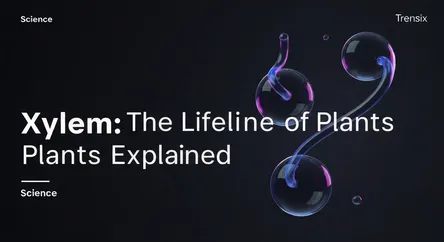Science
Xylem: The Lifeline of Plants Explained

Discover xylem, the essential plant tissue that transports water from roots to leaves and provides structural support, forming the wood we use daily.
What is it?
Xylem is a vital type of transport tissue found in vascular plants, acting like a plumbing system. Its primary function is to transport water and dissolved minerals from the roots up to the rest of the plant, including the stem and leaves. This tissue is composed of specialized, water-conducting cells known as tracheary elements. Xylem also has a secondary function of providing physical support to the plant, much like a skeleton. In fact, the tissue we know as wood is primarily composed of xylem.
Why is it trending?
While a fundamental concept in botany, xylem is continually relevant in studies of climate change, agriculture, and material science. Understanding its function is crucial for developing drought-resistant crops and managing forests sustainably. Scientists study how different environmental conditions affect xylem's efficiency in water transport, which has direct implications for plant survival and crop yields. Furthermore, the structural properties of wood (secondary xylem) are a focus for innovation in biomaterials and renewable construction resources.
How does it affect people?
Xylem has a significant impact on daily life. Its most recognizable form is wood, one of the world's most essential and abundant renewable raw materials, used for construction, furniture, paper, and fuel. In agriculture, the health of xylem tissue directly affects crop productivity and our food supply; an efficient xylem system allows plants to grow tall and produce bountifully. The process of water moving through xylem is also a key part of the water cycle, influencing local and global climate patterns.